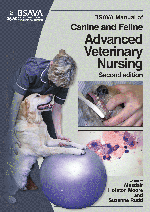
Full text loading...

The word endoscopy literally means to ‘look inside’, and instruments have been available for many years to enable physicians to peer into various body cavities and take diagnostic samples. More sophisticated instrumentation has now greatly increased the scope and usefulness of these techniques to include interventional surgery. As equipment costs come down, endoscopy is being integrated into many veterinary practices as a routine procedure. This chapters discusses Principles of flexible and rigid endoscopy; Care and maintenace; Flexible endoscope procedures; and Rigid endoscope procedures.
Endoscopy, Page 1 of 1
< Previous page | Next page > /docserver/preview/fulltext/10.22233/9781905319725/9781905319725.10-1.gif

Full text loading...




























